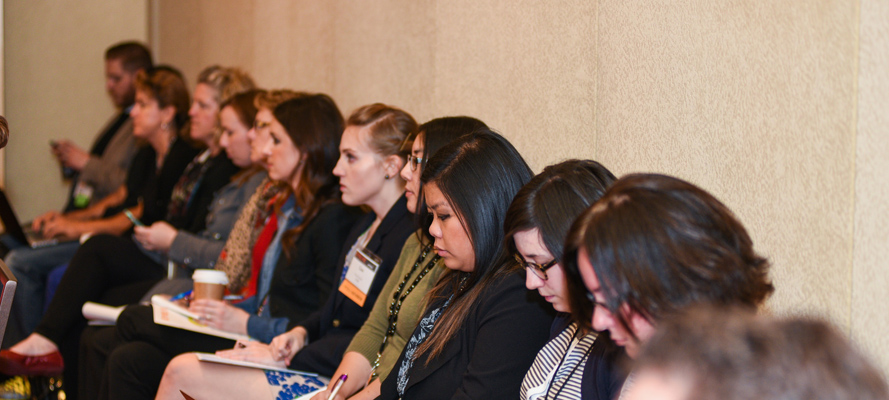New Research Answers Question Every College Wants to Know: Why Do Students Leave and How Do We Get Them Back?
BALTIMORE, MD and WASHINGTON, D.C. (December 1, 2021) – UPCEA (University Professional and Continuing Education Association) and StraighterLine conducted a critical empirical research study profiling the disengaged learner to better understand their situations and motivations in relation to higher education. The study focused on individuals who have college credits but are no longer attending college to identify why they stopped attending and what motivates them to re-engage.
“Given the pandemic and the evolution of a new economy, one that relies on automation and information, students will be more likely to disengage with higher education for a variety of reasons,” said Jim Fong, Chief Research Officer and Director of the Center for Research and Strategy at UPCEA. “Families are more financially fragile and students have greater challenges. If we don’t act or anticipate this, they’ll not only disengage, but they will become disenfranchised with higher education.”
StraighterLine’s Chief Learning Officer Dr. Amy Smith and Fong served as co-lead principal investigators on the 2021 study that targeted adult learners 20-34 years of age and evaluated their responses across generations. In total, 3,236 respondents participated in the study of which 1,021 met all qualifications. Students who were currently enrolled in a college or university were removed from the study.
“So many people start college and never finish. Through this study, we wanted to answer four main questions: Who leaves college? Why do they leave? Who comes back? How do we get them back?” said Smith. “What we see from our research is Gen Z and Millennials leave school for different reasons, but the reason they return is the same — to reach a personal goal.”
Key Takeaways
Who Are the Disengaged Learners?
Using multivariate analysis, the researchers looked at students’ decision factors and motivations, perceptions and attitudes, and likelihood of re-enrollment in higher education based on many factors including their gender, level of education, income and employment status. Women made up the majority of students who have stopped out.
“Men and women do not see higher education the same way. They think differently about career goals, tuition, personal obligations, and existing work responsibilities,” said Smith. “In healthcare you can’t study male cancer and apply it to females. Likewise, you can’t get men and women to re-engage in higher education using the same messaging and tactics.”
According to research by the National Student Clearinghouse, half a million fewer students in college are males and they are continuing to decline at a rate of 71%, and women are projected to lead men in college 2 to 1.
“Our study confirms the trend we have been seeing in higher education for some time: the gender gap is widening,” said Smith.
More than half of the respondents were employed full-time and only 9% were unemployed and overwhelmingly they worked in the retail and consumer durables industry and food and beverage industry.
“Another key takeaway is the majority of disengaged learners are working adults that make $50,000 or less, so they are working on pretty tight budgets,” said Smith. “This is a significant factor that colleges and universities need to think about when re-engaging students.”
Demographics of the Disengaged Learners in the Study:
- Generation: 36% were mid-millennials, 19% were young millennials, and 29% were from Generation Z.
- Gender: 63% of respondents identify as female, 33% as male, and 4% as other options/prefer not to say.
- Fields of Study: 18% business, 14% healthcare, 9% arts, 7% computer science/education, 6% social sciences, 4% law/engineering, 3% communications, and 22% other.
- Current Industry: 15% of respondents said they were employed in retail and consumer durables industry; 14% in food and beverages; 8% are in construction and manufacturing; 7% are in education; 4% are in business, healthcare, government, or telecommunications; 3% are in advertising; and 15% other.
- Employment Status: 51% of respondents are full-time employees, 19% are part-time, 9% are unemployed and not seeking employment, and 22% are unemployed and seeking employment.
- Household Income: 65% fell into the household income of <$35,000 or $35,000 – $50,000, 33% of all respondents fell into the category of $50,000 – $100,000, and less than 2% of all respondents had a household income over $100,000.
What Causes Them to Disengage with Higher-Ed?
“Why are students leaving? The overall finding across the board was that students left school for financial reasons,” said Smith. “One interesting point is this study was conducted during Covid-19 but loss of job was not a variable. So students are leaving for financial reasons, but not because they aren’t working.”
Across all populations, 42% of respondents cited financial reasons for stopping out of higher education. However, examining reasons by generation and gender, those priorities began to shift. Thirty-two percent of students say they left college for family or personal commitments and this was more prevalent among mid-millennials.
“Not surprisingly, family commitments were very important to mid-millennials. Many are working parents who had to make the choice between going to school or providing for their family,” said Smith. “Gen Z, on the other hand, cares more about a school being the right fit for them, and they are willing to pay for it.”
Of this youngest generation of students included in the dataset, 43% of Gen Z said their primary reason for leaving school was because the school was “not the right fit,” signaling their priorities aren’t tied to financial independence like the older demographics.
Which Students Are Most Likely to Re-Engage and Why?
Students were asked to rate the level of engagement they had with their institution during their time as a student. Data showed a strong correlation between level of engagement as a student and satisfaction. Individuals who were more satisfied with their institution were more likely to say they experienced a high level of engagement during their time as a student.
“Keeping your students happy matters,” said Smith. “How you left the school, satisfied or upset, that impacted whether or not you went back to that original school.”
Time also matters. Forty-eight percent of students who had recently left school said they were extremely or very satisfied with their higher education institution versus only 38% of students who had been out of school for several years.
“Student perceptions change over time,” said Smith. “The longer they were gone from that school, the more negative opinion they had of the school and the less likely they are to re-engage.”
While career advancement remains an important motivating factor, this research revealed that personal goals are often a greater motivator for enrollment. Surprisingly 62% of all disengaged learners were motivated to originally enroll in school to reach a personal goal. Career advancement was only 44%, along with love of learning (42%), and improving salary (40%). These data hint the reasons students go back to school after an absence may parallel that original motivation–to reach a personal goal.
“People come back to meet a personal goal, and 62% of them want to finish it. So they never left that original vision of who they were going to be. That’s huge,” said Smith.
What Can Institutions Do to Re-Engage These Students?
As enrollments are declining around the nation, institutions are trying to solve the challenge of how to retain their current students. In this survey, students were asked if there was anything their institution could have done to keep them engaged, and their answers varied by demographic.
Effective Retention Strategies and Tactics Students Across All Generations Said Their Institution Could Have Done
- 70% of students said institutions could provide certificates for credits earned
- 62% of students said institutions could provide courses at lower prices
- 58% of students said institutions could provide workshops to address struggles
- 55% of students said institutions could provide counseling
- 46% of students said institutions could provide concierge services to help
“It is important to look at what are the actionable tactics that can make an impact on a student’s retention,” said Smith. “But keep in mind what works for one student, might not work for another.”
“This research highlights the critical need for institutions to know their students and engage with them on their terms. Modern learners are unique, and so too are their needs and preferences,” said UPCEA’s Chief Research Officer Jim Fong. “It is imperative that institutions cultivate meaningful connections to their students from the moment they enter the enrollment funnel. Life happens, students disengage. In this increasingly competitive marketplace, it is essential that institutions have an established relationship and tactics of engagement with their disengaged learners to bring them back into the fold.”
To view the complete findings and learn more, visit: https://partners.straighterline.com/disengagedlearnersstudy
###
About StraighterLine
StraighterLine is a student success company and the category creator for providing scalable solutions to deliver affordable, effective and accelerated learning pathways to formal degree programs and widely recognized industry credentials. The StraighterLine platform supports over 40,000 new students a year, including directly through the straighterline.com website as well as through the company’s growing network of university and employer relationships. Visit https://www.straighterline.com or https://partners.straighterline.com for more information.
About UPCEA
UPCEA is the association for professional, continuing, and online education. Founded in 1915, the association serves its members with innovative conferences and specialty seminars, research and benchmarking information, professional networking opportunities and timely publications. Based in Washington, D.C., UPCEA builds greater awareness of the vital link between adult learners and non-traditional learners and public policy issues. Visit www.upcea.edu.
Contact:
Summer Martin
Director of Brand and PR
StraighterLine
[email protected]
Molly K. Nelson
Chief Operating Officer / VP of Communications
UPCEA
[email protected]


